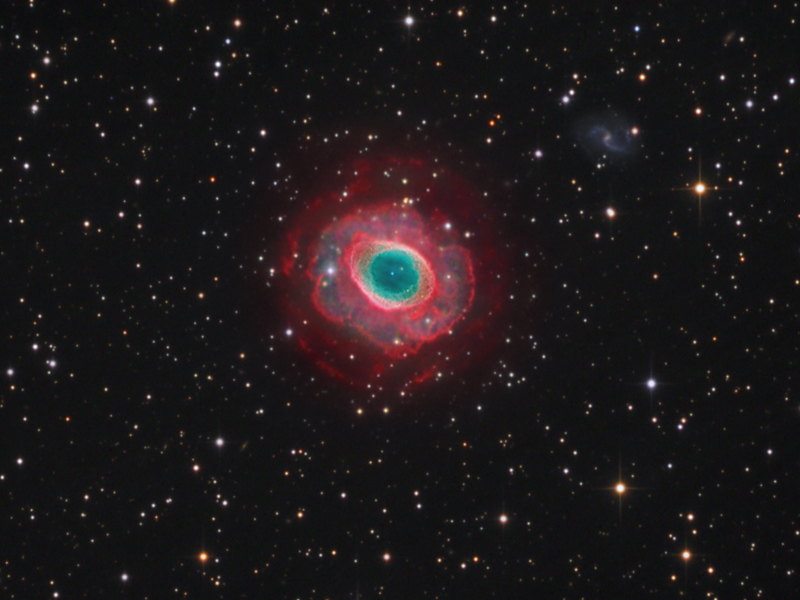
|
Credit & Copyright: Astro-Cooperation -
Stefan Heutz/Wolfgang Ries
Explanation:
A familiar sight for northern
hemisphere astronomers, the
Ring
Nebula (M57) is
some 2,000 light-years away in the musical
constellation
Lyra.
The central ring is about one light-year across, but
this remarkably deep exposure - a collaborative effort combining data
from two different telescopes -
explores
the looping filaments
of glowing gas extending much farther from the nebula's
central star.
Of course, in this well-studied
example of a
planetary nebula,
the glowing material does not come from planets.
Instead,
the gaseous shroud represents outer layers
expelled from a dying, sun-like star.
This composite image
includes over 16 hours of narrow-band data
intended to recorded the red emission from hydrogen atoms,
but the pronounced blue/green color is due to emission from
oxygen atoms at higher temperatures within the ring.
The much more distant spiral
galaxy IC 1296 is also visible at the upper right.
|
January February March April May June July August September October November December |
| ||||||||||||||||||||||||||||||||||||||||||||||||
NASA Web Site Statements, Warnings, and Disclaimers
NASA Official: Jay Norris. Specific rights apply.
A service of: LHEA at NASA / GSFC
& Michigan Tech. U.
Based on Astronomy Picture
Of the Day
Publications with keywords: Ring Nebula - planetary nebula
Publications with words: Ring Nebula - planetary nebula
See also:
- APOD: 2025 August 31 B NGC 7027: The Pillow Planetary Nebula
- APOD: 2025 August 22 B A Tale of Two Nebulae
- APOD: 2025 August 5 B NGC 6072: A Complex Planetary Nebula from Webb
- APOD: 2025 July 29 B A Helix Nebula Deep Field
- APOD: 2025 July 13 B Planetary Nebula Mz3: The Ant Nebula
- APOD: 2025 June 9 B Between Scylla and Charybdis: A Double Cosmic Discovery
- APOD: 2025 May 14 B NGC 1360: The Robins Egg Nebula
